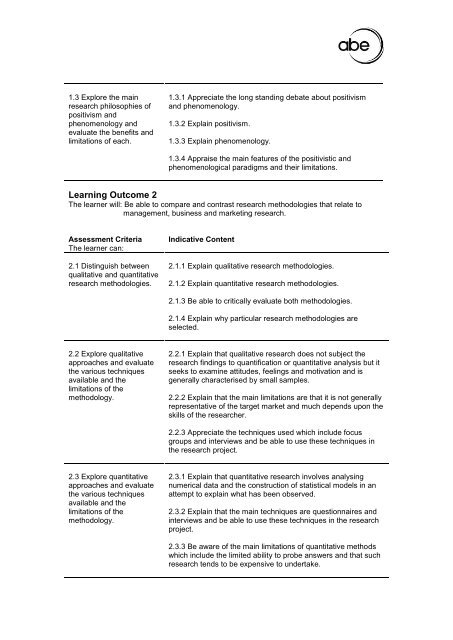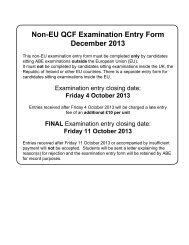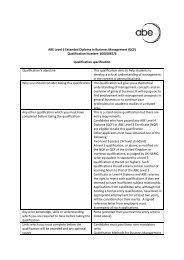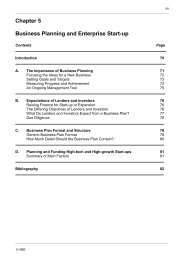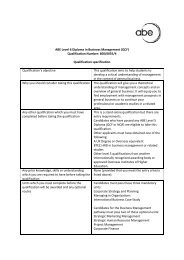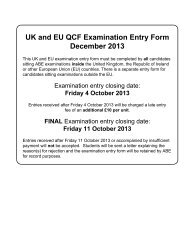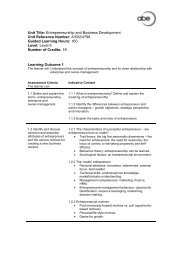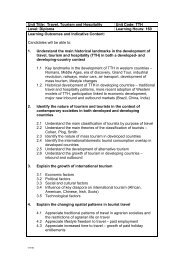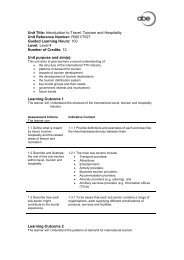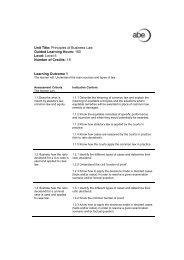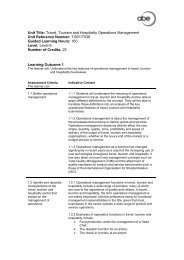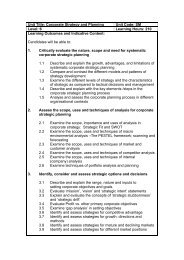Unit Title: Research Methods and their Application to Marketing
Unit Title: Research Methods and their Application to Marketing
Unit Title: Research Methods and their Application to Marketing
Create successful ePaper yourself
Turn your PDF publications into a flip-book with our unique Google optimized e-Paper software.
1.3 Explore the main<br />
research philosophies of<br />
positivism <strong>and</strong><br />
phenomenology <strong>and</strong><br />
evaluate the benefits <strong>and</strong><br />
limitations of each.<br />
1.3.1 Appreciate the long st<strong>and</strong>ing debate about positivism<br />
<strong>and</strong> phenomenology.<br />
1.3.2 Explain positivism.<br />
1.3.3 Explain phenomenology.<br />
1.3.4 Appraise the main features of the positivistic <strong>and</strong><br />
phenomenological paradigms <strong>and</strong> <strong>their</strong> limitations.<br />
Learning Outcome 2<br />
The learner will: Be able <strong>to</strong> compare <strong>and</strong> contrast research methodologies that relate <strong>to</strong><br />
management, business <strong>and</strong> marketing research.<br />
Assessment Criteria<br />
The learner can:<br />
2.1 Distinguish between<br />
qualitative <strong>and</strong> quantitative<br />
research methodologies.<br />
Indicative Content<br />
2.1.1 Explain qualitative research methodologies.<br />
2.1.2 Explain quantitative research methodologies.<br />
2.1.3 Be able <strong>to</strong> critically evaluate both methodologies.<br />
2.1.4 Explain why particular research methodologies are<br />
selected.<br />
2.2 Explore qualitative<br />
approaches <strong>and</strong> evaluate<br />
the various techniques<br />
available <strong>and</strong> the<br />
limitations of the<br />
methodology.<br />
2.2.1 Explain that qualitative research does not subject the<br />
research findings <strong>to</strong> quantification or quantitative analysis but it<br />
seeks <strong>to</strong> examine attitudes, feelings <strong>and</strong> motivation <strong>and</strong> is<br />
generally characterised by small samples.<br />
2.2.2 Explain that the main limitations are that it is not generally<br />
representative of the target market <strong>and</strong> much depends upon the<br />
skills of the researcher.<br />
2.2.3 Appreciate the techniques used which include focus<br />
groups <strong>and</strong> interviews <strong>and</strong> be able <strong>to</strong> use these techniques in<br />
the research project.<br />
2.3 Explore quantitative<br />
approaches <strong>and</strong> evaluate<br />
the various techniques<br />
available <strong>and</strong> the<br />
limitations of the<br />
methodology.<br />
2.3.1 Explain that quantitative research involves analysing<br />
numerical data <strong>and</strong> the construction of statistical models in an<br />
attempt <strong>to</strong> explain what has been observed.<br />
2.3.2 Explain that the main techniques are questionnaires <strong>and</strong><br />
interviews <strong>and</strong> be able <strong>to</strong> use these techniques in the research<br />
project.<br />
2.3.3 Be aware of the main limitations of quantitative methods<br />
which include the limited ability <strong>to</strong> probe answers <strong>and</strong> that such<br />
research tends <strong>to</strong> be expensive <strong>to</strong> undertake.


